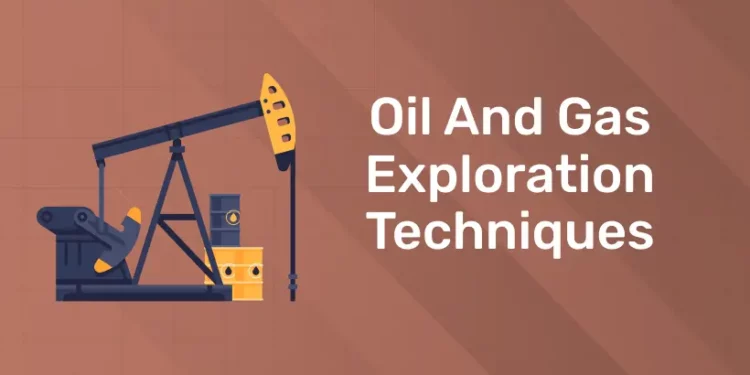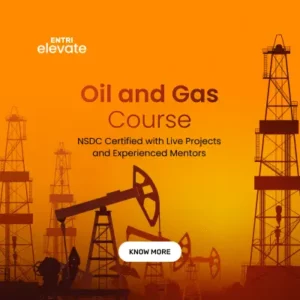Table of Contents
In order to find and extract hydrocarbons effectively and responsibly, oil and gas exploration techniques have changed dramatically over time. These approaches now use cutting-edge technologies. These methodologies which offer distinct insights into subsurface conditions, can be broadly divided into three categories. In this article we are briefly covering about different methods for oil and gas exploration.
Get Certified! Get Confident! Join our Oil and Gas Course!
What is Oil And Gas Exploration?
The process of looking for naturally occurring hydrocarbon reservoirs beneath the surface of the Earth is known as oil and gas exploration. Finding and measuring oil and gas deposits—which are crucial for the generation of energy and a range of industrial uses—involves a combination of scientific methodologies and technological advancements. The process of exploration is intricate and multifaceted, typically consisting of multiple stages:
- Initial Survey and Research
- Geological and Geophysical Surveys
- Geochemical Analysis
- Exploratory Drilling
- Evaluation and Feasibility Studies
- Development and Production
Techniques For Oil And Gas Exploration
1: What is the primary purpose of a refinery in the oil and gas industry?
For the purpose of identifying and assessing prospective hydrocarbon reserves beneath the surface of the Earth, oil and gas exploration uses many methodologies. Geological, geophysical, and geochemical approaches can be used to broadly classify these procedures. Each technique is essential to the research process and provides distinct insights.
Geological Methods
Field Mapping and Surface Geology
To comprehend the geological past of a region, geologists examine outcrops, rock samples, and sediment layers. They search for surface irregularities that could point to the existence of subterranean hydrocarbons, such as leaks of gas or oil. The identification of structural traps, such as faults and anticlines, that may act as reservoirs is aided by field mapping.
Geophysical Methods
Seismic Reflection
In the exploration of oil and gas, this is the geophysical technique that is most commonly used. It involves employing controlled sources, such as vibroseis trucks or dynamite, to create seismic waves. Different geological layers reflect back these waves as they pass through the Earth. The structure and makeup of possible reservoirs are revealed by the detailed subsurface images that are produced using the data that is obtained from the sensors that record the reflected waves.
Magnetic Surveys
Different types of rocks generate changes in the Earth’s magnetic field, which are measured using magnetic surveys. This technique is helpful in determining whether specific rock types—like salt domes or basalt—are present, as these can have an impact on hydrocarbon traps. Magnetic surveys conducted from the air or on the ground can swiftly cover wide areas and yield important details about the subsurface geology.
Gravity Surveys
Variations in the Earth’s gravitational field are measured via gravity surveys. Sensitive equipment can detect minute variations in gravity caused by variations in rock density. This method aids in the mapping of subsurface features that may hold hydrocarbons, such as fault lines and sedimentary basins.
Geochemical Methods
Soil Gas Surveys
Soil gas samples must be collected and analyzed in order to look for signs of hydrocarbons or other gases that could seep from underground sources. Elevated concentrations of some gases may indicate the presence of subterranean gas or oil reserves. This strategy is sometimes paired with other exploratory strategies to focus on particular goals.
Micro-Seepage Analysis
This method finds microscopic hydrocarbon leakage from reservoirs to the surface. Finding possible drilling locations can be facilitated by learning more about the kind and age of the hydrocarbons present by analyzing the chemical makeup of these leaks.
Emerging Techniques
Remote Sensing and Satellite Imagery
Large-scale geological and environmental data are provided via satellite imaging and remote sensing technology. In relation to subsurface hydrocarbon accumulations, they are able to recognize surface abnormalities, vegetation stress, and thermal anomalies.
Electromagnetic Surveys
Electromagnetic (EM) techniques measure the response after sending electromagnetic fields into the earth. Electrical conductivity variations may be used to detect the presence of hydrocarbons. When it comes to offshore exploration, where alternative approaches could be difficult, electromagnetic surveys come in handy.
Reservoir Characterization and Modeling
After prospective reservoirs are located, they are thoroughly characterized using cutting-edge methods such as reservoir simulation, computer modeling, and 3D seismic imaging. The planning of drilling operations, production optimization, and hydrocarbon volume estimation are all aided by these techniques.
Entri App – Oil And Gas Course
Entri’s Oil and Gas Course is a highly acclaimed program that is tailored to students who aspire to pursue a fulfilling career in the oil and gas industry. It’s perfect for those looking for high-paying employment in India and other nations.
The “Oil and Gas Course” at Entri isn’t like other classes. With this all-inclusive training program, you will get the skills and knowledge necessary to succeed in the exciting world of oil and gas. You’ll get the chance to put your knowledge to use in real-world situations, which will raise the value of your degree and improve your chances of landing a dream job.
Get Certified! Get Confident! Join our Oil and Gas Course!
Frequently Asked Questions
What is the primary goal of oil and gas exploration?
Finding and measuring prospective hydrocarbon reservoirs beneath the surface of the Earth that may be profitably recovered and developed for the generation of energy is the main objective of oil and gas exploration.
How do magnetic and gravity surveys aid in exploration?
While gravity surveys track changes in the gravitational field, magnetic surveys track fluctuations in the Earth’s magnetic field. These variances can assist identify regions that may contain hydrocarbons by pointing to various rock types and geological features.
How does remote sensing contribute to oil and gas exploration?
Large-scale geological and environmental data can be obtained using satellite imaging and remote sensing. These technologies aid in the initial identification of exploration locations by detecting surface anomalies, vegetation stress, and thermal anomalies linked to subsurface hydrocarbon accumulations.
Why is exploratory drilling necessary in oil and gas exploration?
To physically confirm the existence of hydrocarbons found through geological, geophysical, and geochemical studies, exploratory drilling is required. The process of drilling yields direct samples of rock, gas, and oil, which facilitates precise evaluation of the quantity and quality of the reservoir.











